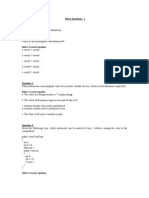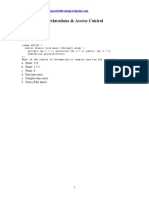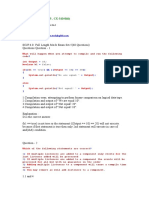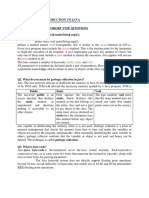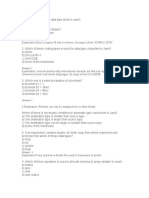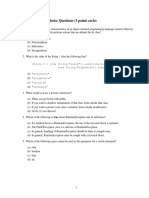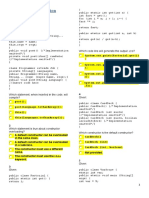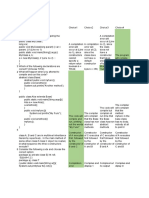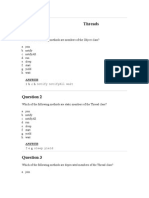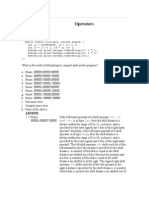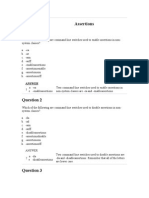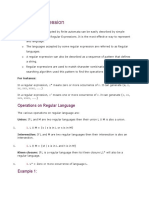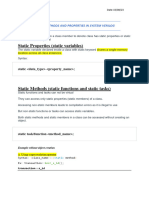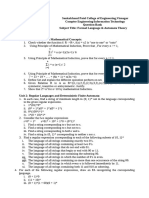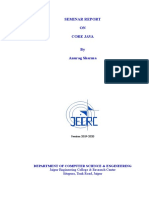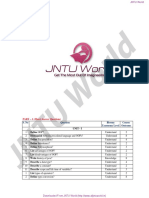0% found this document useful (0 votes)
226 views13 pagesDeclaration & Access Control Question 1
The document discusses access control and declaration in Java classes. It contains 6 questions about access modifiers, constructors, and their valid usages. Question 8 asks which technique can prevent a class from being instantiated outside the class, and the answer is to declare all constructors as private.
Uploaded by
rahul rastogiCopyright
© Attribution Non-Commercial (BY-NC)
We take content rights seriously. If you suspect this is your content, claim it here.
Available Formats
Download as DOC, PDF, TXT or read online on Scribd
0% found this document useful (0 votes)
226 views13 pagesDeclaration & Access Control Question 1
The document discusses access control and declaration in Java classes. It contains 6 questions about access modifiers, constructors, and their valid usages. Question 8 asks which technique can prevent a class from being instantiated outside the class, and the answer is to declare all constructors as private.
Uploaded by
rahul rastogiCopyright
© Attribution Non-Commercial (BY-NC)
We take content rights seriously. If you suspect this is your content, claim it here.
Available Formats
Download as DOC, PDF, TXT or read online on Scribd
/ 13



